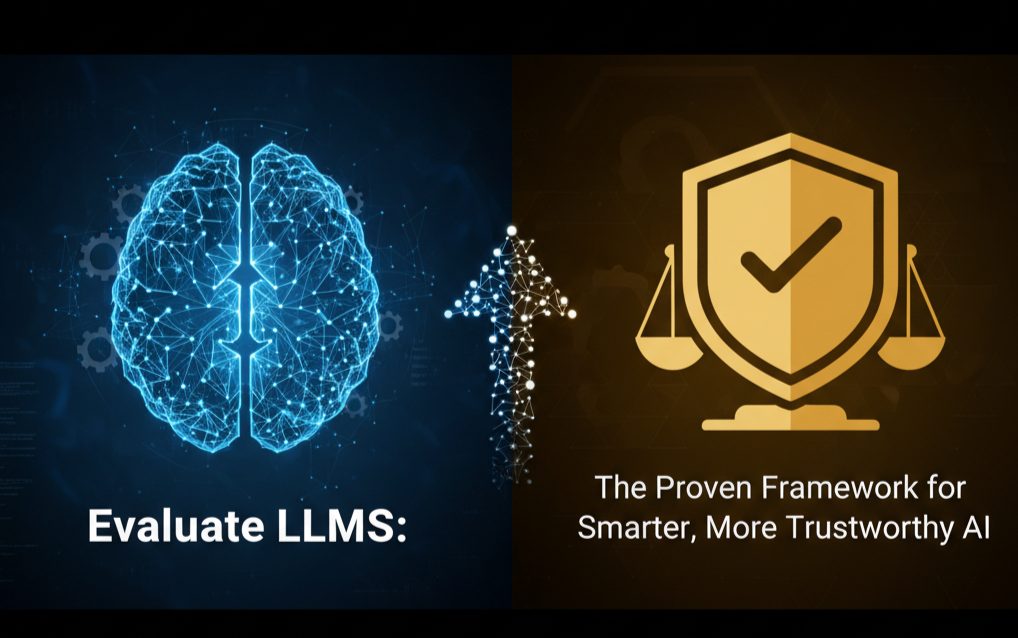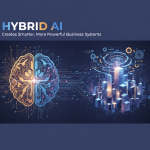Building an AI model is only half the journey; you must evaluate LLMs.
The real test begins after deployment — when your model interacts with real users, data, and decisions that shape your business.
At AiBridze Technologies, we’ve learned that evaluating large language models (LLMs) is not just about accuracy. It’s about trust — ensuring your AI is consistent, explainable, and valuable over time.
This article outlines our proven evaluation framework for building smarter and more trustworthy AI — one that delivers measurable business results, not just impressive demos and there are various ways.
1. Why LLM Evaluation Matters
LLMs are powerful but unpredictable.
Unlike traditional software, they don’t follow fixed logic — they generate it. This flexibility is what makes them useful, but also risky in enterprise environments.
Common evaluation challenges-
- Responses sound confident but may be factually wrong
- Output varies when prompts are rephrased
- The model struggles with context in multilingual or domain-specific cases
- Enterprises lack visibility into whether AI is truly adding value
💡 Example-
A financial assistant trained to summarize reports gave flawless explanations — except that 2% of its summaries misinterpreted data points. That small error rate caused significant internal rework and compliance risk.
That’s why at AiBridze, evaluation isn’t an afterthought — it’s a continuous process baked into every stage of the AI lifecycle.
2. The Three Dimensions of LLM Evaluation
a. Accuracy — Measuring the Facts
Accuracy determines how well an AI reflects the truth.
We evaluate factual correctness, logical reasoning, and contextual relevance using a blend of automated scoring and human review.
Metrics we use-
- Factual Consistency Rate- Checks if outputs align with source data
- Semantic Similarity Index- Compares generated vs. reference answers
- Domain-Specific Correctness- Custom benchmarks for industries like finance, healthcare, and logistics
💡 Example-
In our ERP assistant for a logistics client, we validate answers against live SQL data, ensuring every result matches the actual system output.
b. Consistency — Stability Across Prompts and Sessions
An LLM that answers correctly once is good.
An LLM that answers correctly every time is trustworthy.
Consistency measures whether the AI produces stable and predictable outputs across variations of the same query or across languages and contexts.
Metrics we use-
- Prompt Variance Score- How much the answer changes with paraphrased prompts
- Cross-Language Consistency- Checks semantic equivalence across translations
- Temporal Stability Index- Measures output drift over time
💡 Example-
Our multilingual HR chatbot provides identical policy explanations in English, Arabic, and Hindi — verified through automated semantic matching.
c. Value — Measuring Real Business Impact
Accuracy and consistency mean little without measurable business value.
We quantify how effectively AI contributes to efficiency, cost savings, and decision support.
Metrics we use-
- Task Completion Rate – How often users reach successful outcomes
- User Satisfaction (CSAT) – Human feedback on clarity and usefulness
- Operational Efficiency Index – Time and cost saved compared to manual processes
💡 Example-
After deploying AiBridze’s AI assistant, a client in manufacturing achieved a 45% drop in time spent on report analysis — a clear metric of business value.

3. AiBridze’s Evaluation Framework
| Stage | Purpose | Evaluation Methods |
| 1. Benchmark Testing | Establish performance baseline | Use open benchmarks (MMLU, TruthfulQA) + domain data |
| 2. Human Review | Validate tone, accuracy, and context | SMEs manually audit samples for correctness |
| 3. Automated Scoring | Scale testing across thousands of prompts | Python test harness measures factuality and latency |
| 4. Continuous Monitoring | Track performance drift in production | Live evaluation dashboard monitors accuracy and cost |
Result-
This framework ensures that every model released through AiBridze meets strict standards of accuracy, reliability, and explainability — before it ever reaches production.
4. Common Pitfalls in LLM Evaluation
Despite its importance, LLM evaluation is often misunderstood.
Here are a few pitfalls we help enterprises avoid-
- Overfitting to Benchmarks- Models that ace standard tests may fail in real business workflows.
- Ignoring Bias- Subtle tone or data bias can impact decision-making trust.
- Lack of Human Oversight- Automated scores alone can’t measure reasoning quality.
- Static Evaluation- AI systems evolve — metrics must evolve too.
At AiBridze, we combine automated evaluation with domain-expert validation to balance precision and practicality.
5. The Future of AI Evaluation
As LLMs grow more complex, evaluation is shifting from one-time testing to continuous intelligence.
Next-generation systems will use AI to evaluate AI — self-diagnosing errors, hallucinations, and drift.
Emerging trends include-
- Real-time factual verification through RAG pipelines
- Explainability dashboards showing reasoning paths
- Bias and toxicity detection using automated classifiers
- Federated evaluation systems for hybrid AI environments
These innovations will make enterprise AI self-auditing, adaptive, and transparent — the foundation of truly trustworthy systems.
Conclusion
Evaluating LLMs isn’t about scoring perfection — it’s about building confidence.
When AI is accurate, consistent, and valuable, it earns the trust of both users and decision-makers.
At AiBridze Technologies, our mission is to help enterprises deploy AI that doesn’t just work — it proves it works.
Because in today’s intelligent world, the measure of AI success is not just how smart it is — but how trustworthy it remains.
Ready to make your AI measurable, reliable, and business-ready?
Discover how AiBridze can implement a proven evaluation framework for your enterprise to evaluate LLMs.
Contact us today to start building smarter, more trustworthy AI.






